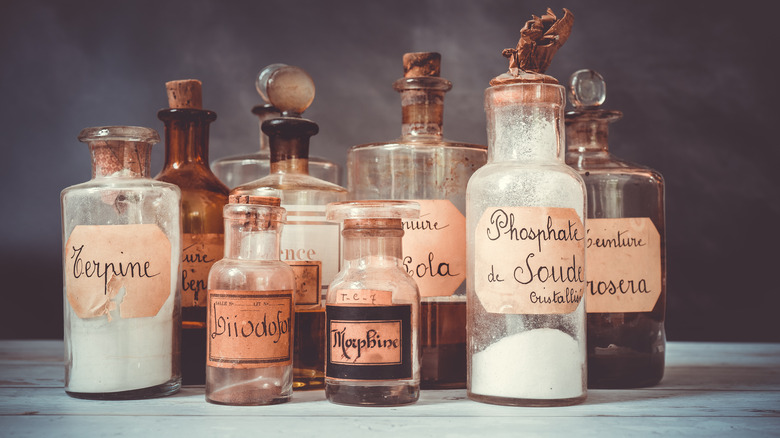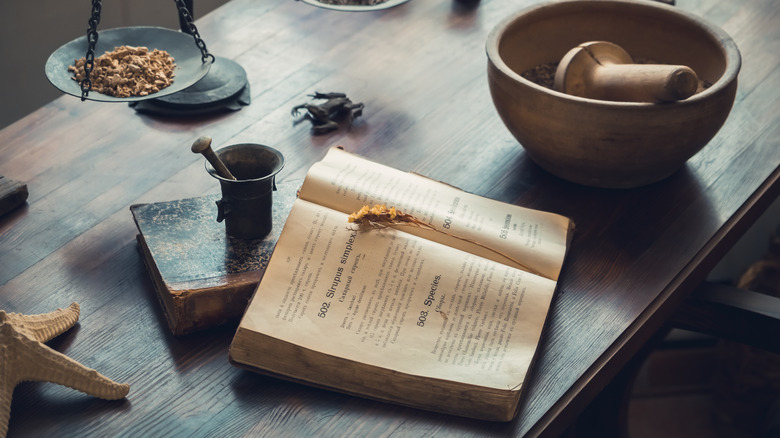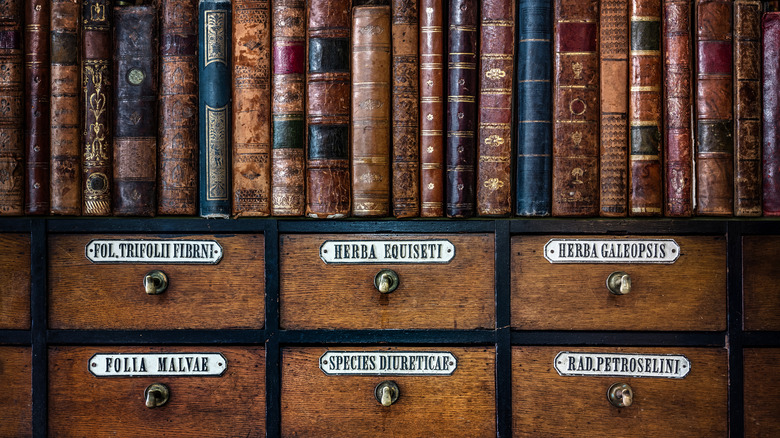What Life Was Like As An Apothecary In The Colonial Era
Living in modern times, it's easy to take for granted some of the things that we're used to having. But have you ever thought of what it was like for people who lived way back in periods like the Colonial era? Think of a world where blacksmithing, shoemaking, wig making, and brickmaking were the common trades. Back then, prestigious jobs in the military and politics were reserved for the wealthy, while the majority made a living providing common goods and services needed by the people.
One of the most common trade workers in the Colonial era was the apothecary. It's common to think of apothecaries as people who sold drugs for medicinal purposes, but they were more than that. In Colonial times, apothecaries had various skills and performed medical treatments, surgeries, and even aided women in giving birth (via Slavery and Remembrance). In other words, they were considered the doctors and chemists of that time — not just pharmacists who dispensed medicines.
How apothecaries treated their patients
With medical equipment and medicines not available in the Colonial era, apothecaries had to make do with what was readily available. They used herbs and spices such as sage, bergamot, basil, lavender, and mint to treat various ailments, per The Classroom. Apothecaries studied the effects of these herbs on their patients, and they also mixed herbs together to form concoctions to treat common medical issues such as inflammation, pain, and fever. And while medicinal pills were available, they weren't like the pills we have today. Instead, they were made with dried herbs and mixed with honey or other binders to form a pill. Some of the most common diseases back then included malaria, yellow fever, and typhus.
Surgeries can be brutal without anesthesia. Just like the surgeons of today, apothecaries used various tools to conduct their procedures, but the process of sterilizing equipment wasn't common. Standard cutting and extraction tools were used, as well as a needle and thread to sew a patient up after surgery. For the pain, patients were given opium or alcohol. With information on diseases not known at the time, apothecaries focused on providing remedies for patients' symptoms rather than finding the root cause of the problem (via Mr. Nussbaum).
Other responsibilities of an apothecary
Apothecaries didn't just provide cures for ailments — some of them also managed their own shops where people could purchase remedies for common illnesses, as well as other items such as tea, soap, or coffee (via Facts4Me). Those with sufficient knowledge also acted as chemists and mixed together various ingredients to come up with cures. Many also had their own garden and tended to it themselves so they could have herbs readily available for their patients.
In addition to all of these roles, apothecaries also usually took on an apprentice to teach. These apprentices typically started out as a sort of assistant to the apothecary, learning the trade along the way. Apothecaries passed on their knowledge to their apprentices by giving advice, providing reading materials, and teaching them how to mix medicinal herbs, according to Project Gutenberg. When an apothecary deemed an apprentice knowledgeable, the apprentice would sometimes put theory into practice by assisting or taking over the duties of common medical treatments.


